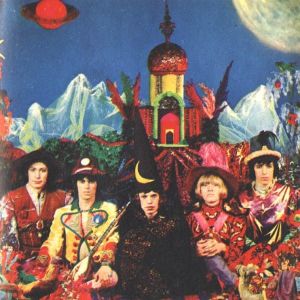Advertisement
If you have a new account but are having problems posting or verifying your account, please email us on hello@boards.ie for help. Thanks :)
Hello all! Please ensure that you are posting a new thread or question in the appropriate forum. The Feedback forum is overwhelmed with questions that are having to be moved elsewhere. If you need help to verify your account contact hello@boards.ie
Hi there,
There is an issue with role permissions that is being worked on at the moment.
If you are having trouble with access or permissions on regional forums please post here to get access: https://www.boards.ie/discussion/2058365403/you-do-not-have-permission-for-that#latest
There is an issue with role permissions that is being worked on at the moment.
If you are having trouble with access or permissions on regional forums please post here to get access: https://www.boards.ie/discussion/2058365403/you-do-not-have-permission-for-that#latest
Even Historians like Christmas - but what are Irish Traditions.
-
16-12-2010 11:12pm#1
Comments
-
-
-
-
-
-
Advertisement
-
-
-
-
-
-
Advertisement
-
-
-
-
-
-
-
-
-
-
-
Advertisement
-
-
-
-
-
-
-
-
-
-
Advertisement
-
-
-
-
-
-
-
Advertisement
-
-
-
-
-
-
Advertisement
-
-
-
-
-
-
-
-
-
-
-
Advertisement
Advertisement


 Another Viking tradition was the Yulelog, a large oak log decorated with sprigs of fir, holly or yew. They carved runes on it, asking the Gods to protect them from misfortune. A piece of the log was saved to protect the home during the coming year and light next year's fire. Today, most know the Yulelog as a cake or cheese log rolled in nuts.
Another Viking tradition was the Yulelog, a large oak log decorated with sprigs of fir, holly or yew. They carved runes on it, asking the Gods to protect them from misfortune. A piece of the log was saved to protect the home during the coming year and light next year's fire. Today, most know the Yulelog as a cake or cheese log rolled in nuts. 

 The Yule Goat, (Swedish julbock, Finnish joulupukki, Norwegian julebukk) is one of the oldest Scandinavian Christmas symbols. Its origin is the legend about the Thundergod Thor who rode in the sky in a wagon pulled by two goats. An old custom was for young people to dress up in goat skins and go from house to house and sing and perform simple plays. They were rewarded with food and drink. The Yule Goat at one time also brought Yule gifts. This character was later replaced with "jultomten" (Santa Claus).
The Yule Goat, (Swedish julbock, Finnish joulupukki, Norwegian julebukk) is one of the oldest Scandinavian Christmas symbols. Its origin is the legend about the Thundergod Thor who rode in the sky in a wagon pulled by two goats. An old custom was for young people to dress up in goat skins and go from house to house and sing and perform simple plays. They were rewarded with food and drink. The Yule Goat at one time also brought Yule gifts. This character was later replaced with "jultomten" (Santa Claus).
 https://www.youtube.com/watch?v=oJoXCwkPVi8
https://www.youtube.com/watch?v=oJoXCwkPVi8




 The Christmas book: Christmas in the olden time, its customs and their origin : the holly and ivy, sports of the eve, Yule log, boar's head, the dinner, mummers, Lord of Misrule, Saturnalia, carols, mysteries and plays, boxes, &c. &c
The Christmas book: Christmas in the olden time, its customs and their origin : the holly and ivy, sports of the eve, Yule log, boar's head, the dinner, mummers, Lord of Misrule, Saturnalia, carols, mysteries and plays, boxes, &c. &c
 Grianstad an Gheimhridh being an ancient native observance without the influence from the Scandinavians or Anglo-Saxons.
Grianstad an Gheimhridh being an ancient native observance without the influence from the Scandinavians or Anglo-Saxons.

 https://www.youtube.com/watch?v=PZNMu46WYMA
https://www.youtube.com/watch?v=PZNMu46WYMA https://www.youtube.com/watch?v=_cmpjXMH6nQ
https://www.youtube.com/watch?v=_cmpjXMH6nQ